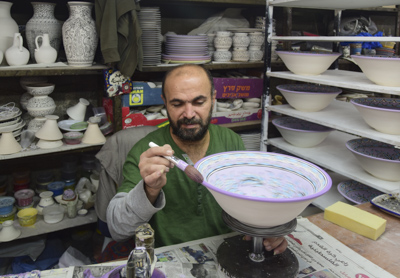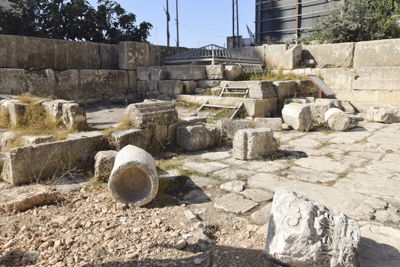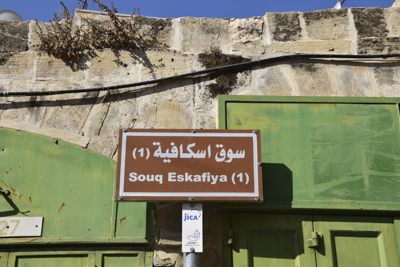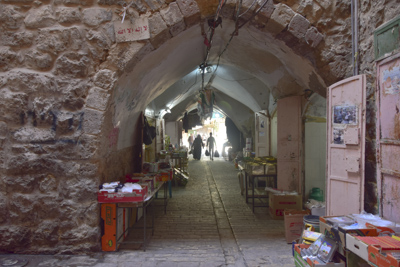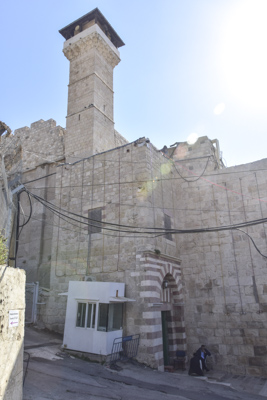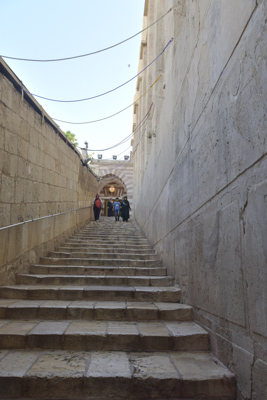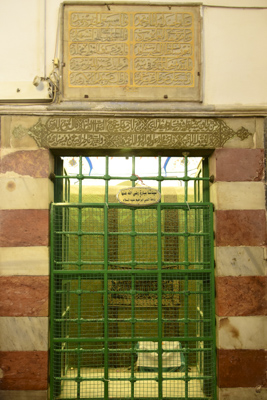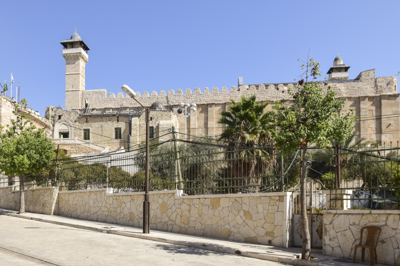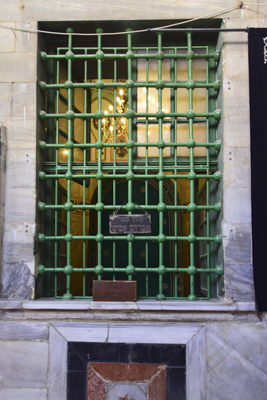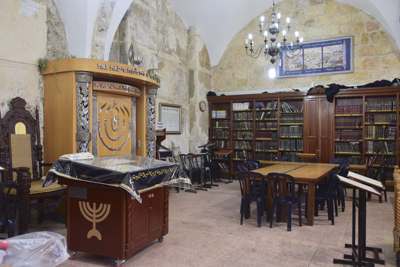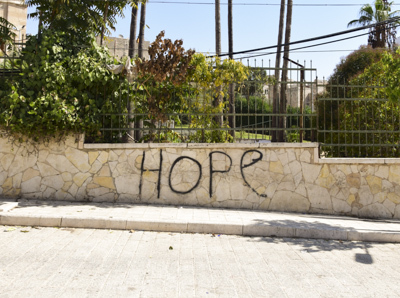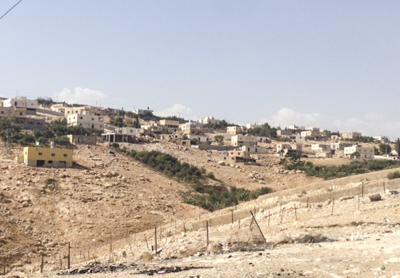Tuesday – October 17, 2017
I woke up early at 5:45, showered, and went downstairs to breakfast at the Manger Square Hotel in Bethlehem. The large room reminded me of a “church hall social.” There were long tables neatly set in rows with noisy smiling pilgrims milling around, talking, and eating. Sunrise view of Bethlehem from my hotel room:
Soon we were on our way to the West Bank city of Hebron, one of the four Holy Cities of the Jewish faith, along with Jerusalem, Tiberius, and Tsfat (Safed) because of its association with Abraham. Hebron, means “friend” in Hebrew, and is translated to Al-Khalil or “friend of God” in Arabic. Hebron is an ancient city with its history reaching back 5,000 years. Today, Hebron is prosperous and thriving with a population of about 250,000 people. It’s the largest city and the commercial capital of the West Bank.

The sign in the photo above reminded me of the division of the West Bank into three “administrative areas.” Area A is exclusively administered by the Palestinian Authority; Area B is administered by both the Palestinian Authority and Israel; Area C – which contains Israeli settlements – is administered by Israel. The sign informed us that we were entering Area A.
Our first stop was the Hebron Glass & Ceramic factory owned and operated by the same family since 1890. The city is famous throughout Israel and Palestine for ceramics and glassblowing, among other trades.
After we watched the glassblowers at work, we continued to an archaeological site called Bir Haram Al-Rama (Mamre) which was first excavated in the 1920s. It is believed to be the site where Abraham received three angels announcing the future birth of his son Issac. It might also have been a resting place for Joseph and Mary on their way to Egypt.

King Herod the Great built an impressive complex on the site during the Roman period. A century later, the site became one of the main market places in Palestine. By 614 AD, a monastery was built here. A roofed cistern with stone basins is visible in one corner of the site.
The happy sounds of school boys playing soccer in a playground behind a wall, echoed across the archeological site and reminded me of the present. I wondered what the boys thought about the site, since it was part of their daily experiences. What is history, after all? History is supposed to inform, support, and enrich the present. (?)
The Old City of Hebron was declared a World Heritage site by UNESCO in July 2017. Given its geographic location at historic crossroads in the center of Palestine, Hebron/al-Khalil was a major center of trade and culture throughout history. What better place to see commercial enterprise than The Souq in the Old City?
We walked through the Souq Eskafiya in the Old City, which means “Cobbler’s Market” named for the shoe industry which flourished here for many decades. Unfortunately, the souq was mainly closed. It was sad to see so many shops boarded up. One of the shop keepers who spoke English described tensions with Israeli troops posted nearby. I imagine living there is stressful for everyone.
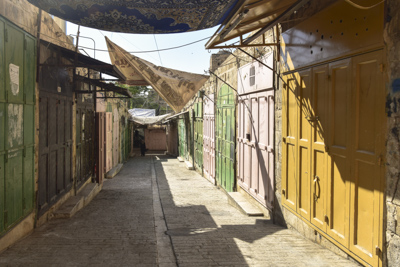
Checkpoints, security fences, and heavy secure turnstiles are a way of life. A small community of a few hundred Zionists settlers, driven by their faith and the importance of not abandoning the burial site of their patriarch, live above the market. Walking down the quiet street indicated discord between two communities.
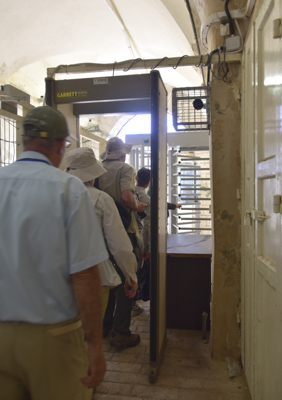
We walked through a metal detector and numerous heavy-duty turnstiles to arrive at our destination: Abraham’s Mosque.
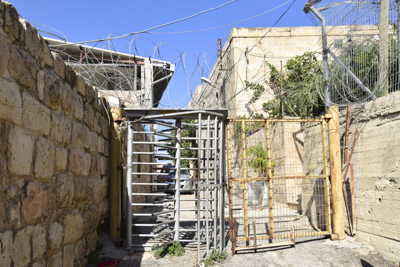
The building that houses the Tomb of the Patriarchs is divided into two parts to serve Jewish and Muslim worshippers. The tombs are located in a holy site under a Crusader church whose foundation walls are made of “Herod’s Stones.” The stones have decorative carved borders and were quarried during King Herod’s reign. We saw the same 2,000 year old stones at the Western Wall in Jerusalem.
We passed through the guarded entry of Al-Haram al-Ibrahimi (Abraham’s Mosque) and climbed the stairs to the main door.
Non-Muslim women have to cover-up in order to enter the mosque so were given blue cloaks. We all looked pretty funny.
This is the fourth holiest site in Islam and the second holiest site in Palestine. The Prophet Abraham resided in Hebron about 4,000 years ago. He chose the city as a burial place for himself and his wife Sarah, his son Isaac with his wife Rebecca, and his grandson Jacob with his wife Leah. They are also considered the Patriarchs and Matriarchs of the Jewish people, which is the reason the building is divided in half with a mosque on one side and a synagogue on the other.

According to tradition, a cave and adjoining field were purchased by Abraham as a burial plot. The Cave of the Patriarchs is located beneath the building complex which houses the mosque and synagogue. Four cenotaphs (empty tombs) are visible to worshippers and the general public. Below is a photo of the stone canopy above the visible entrance to the caves, which are not accessible.
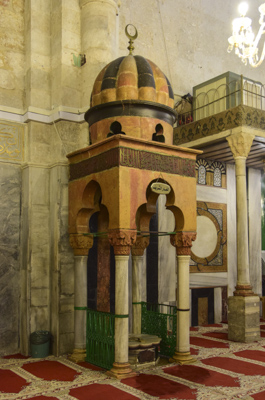
We left the mosque and walked around the building to the entrance of the synagogue. Jacob’s and Leah’s tombs are located on this side.
We saw the other side of Abraham’s Tomb (actually empty) and a lovely library.
We walked through another section of the souq which seemed more active.
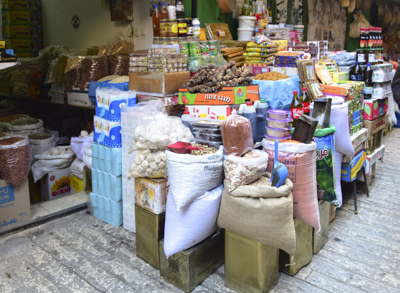
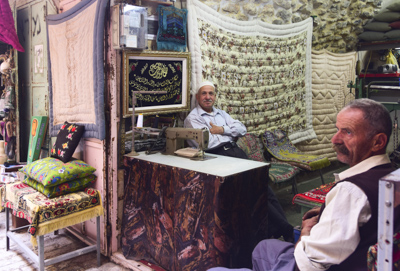
As we left the Old City, I noticed graffiti on a wall:
We had a tasty lunch at a restaurant in Hebron called Dome of the Rock which had a beaded model of the monument in Jerusalem. Then we drove out of the city into the desert to the home of a Bedouin family.
The family had been resettled in cinder-block houses. The boys in the extended family met with us; some were brothers, others were cousins. They shyly practiced their English skills and a couple of the younger boys sang songs in English. One of the mothers joined us for a short time.
“And now for something entirely different….” as Monty Python used to say, we drove to one of the Israeli settlements in the West Bank named Efrat, which was named after the biblical place Ephrath. The settlement was established in 1983 and currently has a population of about 10,000 people.
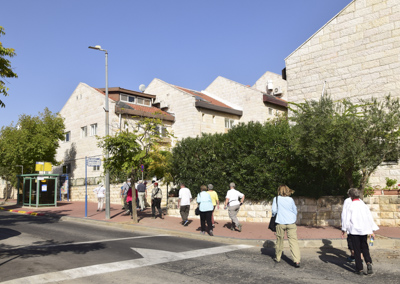
We joined a large group from Grand Circle Tours and walked up the steep hill to one of the synagogues. An American-born man from Pennsylvania described his experiences as a long-time resident of the settlement. He said a majority of residents are Americans.

This was a typical house which we passed on our climb up the hill:
Unfortunately, he was defensive and arrogant when asked questions about Palestinian lands and settling on the West Bank. He spoke of entitlement.
My head was full of inconsistencies, conflicts with no easy solution, differing opinions, and personal contacts with real people. The tour bus drove us back to Bethlehem for a quiet evening.


